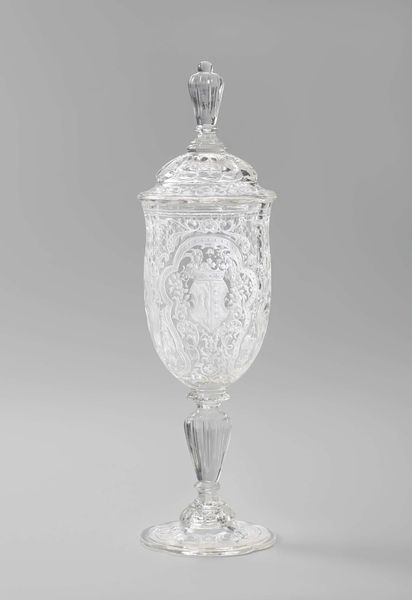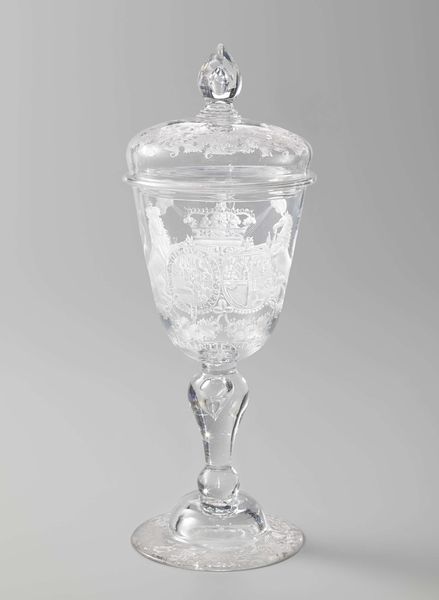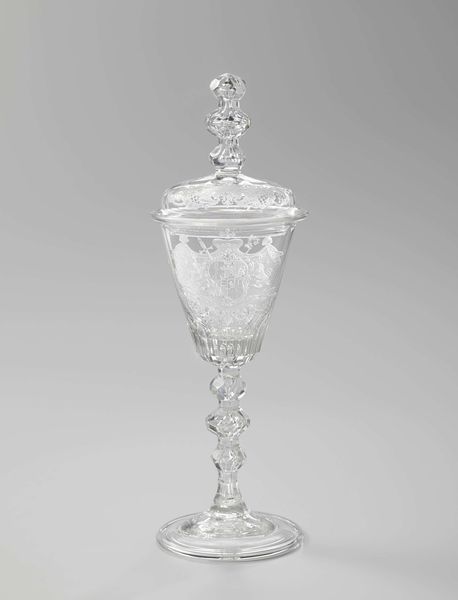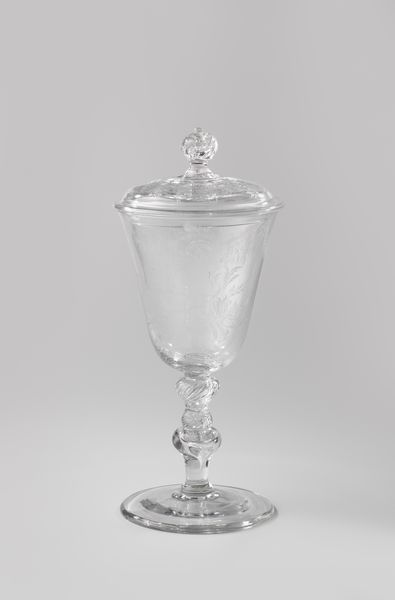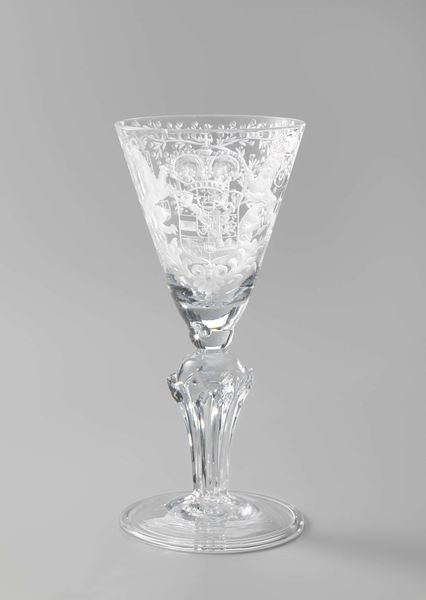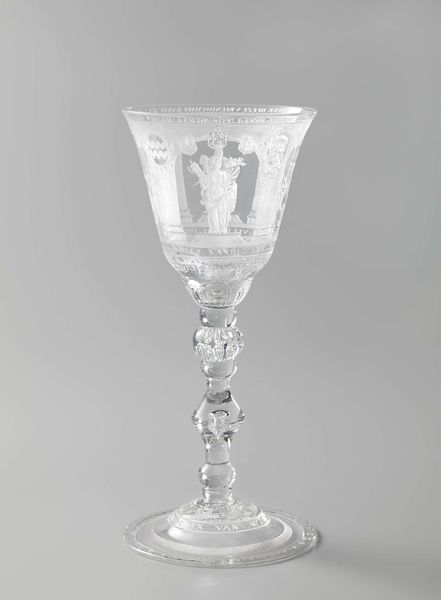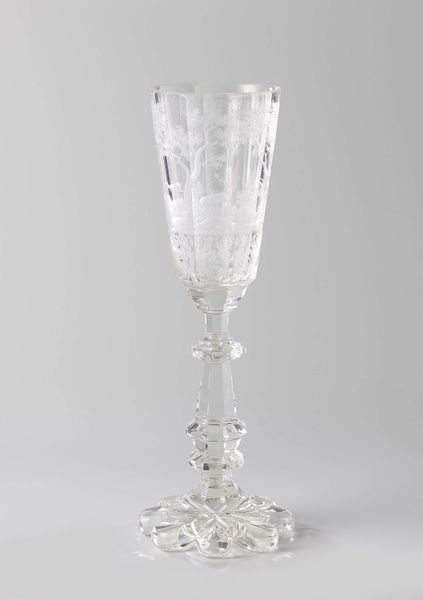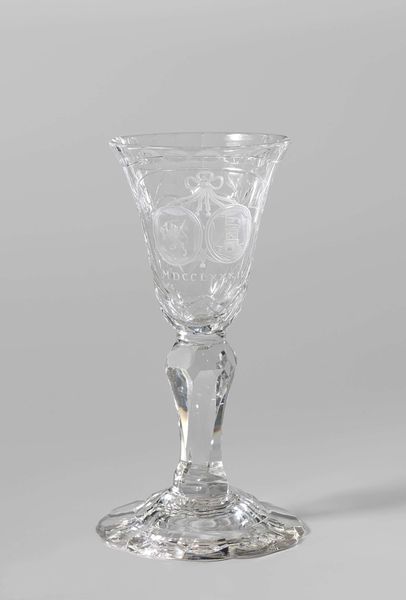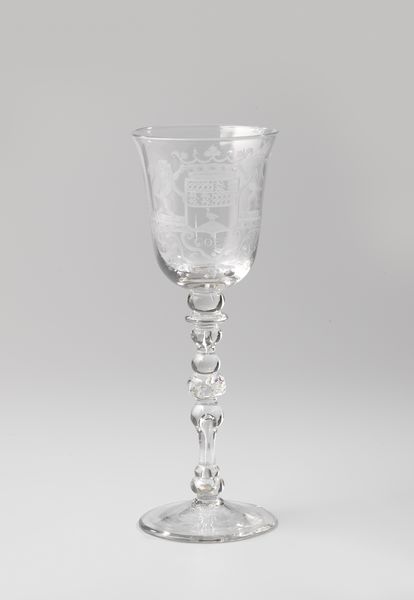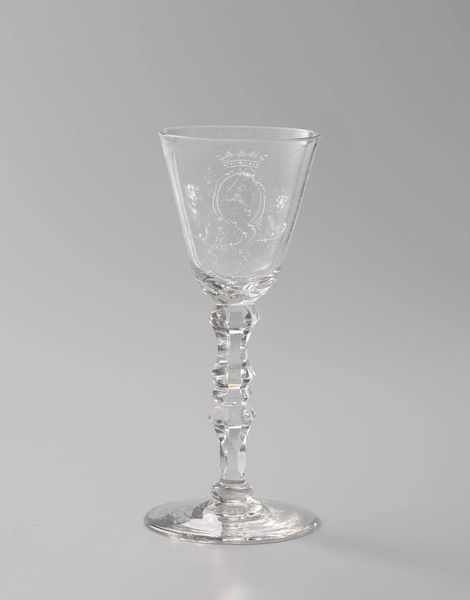
intaglio, glass
#
baroque
#
intaglio
#
glass
#
ceramic
#
decorative-art
Dimensions: height 40.6 cm, height 28.1 cm, height 13.9 cm, diameter 12 cm, diameter 12.2 cm
Copyright: Rijks Museum: Open Domain
This lidded goblet resides here at the Rijksmuseum, crafted anonymously from glass. Its transparency invites an immediate focus on form, the interplay between clear structure and delicate engraving. The goblet's design, divided into distinct tiers, presents a study in structural elegance. The base broadens to support a stem composed of spherical nodes and a widening, conical bowl. Crowning this is a lid, topped with a multifaceted finial that catches and refracts light. Engraved patterns adorn the glass, their semiotic function evoking themes of royalty or celebration, yet their ethereal execution renders them almost abstract. The goblet challenges our assumptions about value. Is it purely ornamental, a display of skill and luxury, or does its function somehow elevate the everyday to the ceremonial? Its transparency asks us to reflect on what is revealed and concealed, on the play between surface and depth, and ultimately, on the act of seeing itself.
Comments
rijksmuseum about 2 years ago
⋮
A wheel-engraving was created by holding a glass against a rotating (copper) disc. A glue-like substance on the disc created extra friction and also cooled the glass. Dutch wheel-engravings were strongly influenced by German examples. So it is difficult to say with certainty whether the portraits of Anne of Hanover and her two children on this goblet were made in the Netherlands or commissioned by a Dutch patron in Germany. Translation of inscription: monograms APVO (Anne, Princess of Orange), WPVO (William, Prince of Orange) and CPO (Caroline, Princess of Orange).
Join the conversation
Join millions of artists and users on Artera today and experience the ultimate creative platform.
